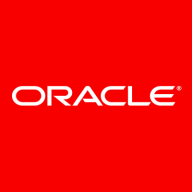

RHEV and Oracle VM VirtualBox are two competing products in the virtualization market. RHEV holds an edge in enterprise settings due to its integration capabilities and stability, whereas Oracle VM VirtualBox is preferred for flexibility and ease of use.
Features: RHEV is recognized for its robust management capabilities, high compatibility with enterprise systems, and it supports up to 160 cores and up to 2 TB RAM, making it suitable for extensive IT needs. Oracle VM VirtualBox allows for broad Operating System compatibility, a straightforward setup for creating VLANs and interface groups, and supports sharing of USB devices between host and VMs.
Room for Improvement: RHEV could improve in reducing setup complexities and making high-level features more accessible to smaller businesses. It might also benefit from a more intuitive interface and broader community support. Oracle VM VirtualBox could enhance its performance on high-demand systems and refine its support for more complex enterprise-level operations. Its interface could be updated to cater to more advanced needs, and official support options could be expanded beyond community forums.
Ease of Deployment and Customer Service: RHEV offers an extensive but more involved deployment process, supported by strong customer service ideal for enterprises. Oracle VM VirtualBox stands out with its straightforward deployment process, requiring minimal configuration and offering community-based customer support, which increases accessibility for smaller organizations and individual users.
Pricing and ROI: RHEV tends to have higher initial setup costs due to its focus on enterprise-grade infrastructure, offering significant ROI for businesses with rigorous virtualization needs. Oracle VM VirtualBox is free, making it a cost-effective solution for smaller operations, offering good ROI by minimizing upfront expenses and maintaining essential features without added costs.
| Product | Market Share (%) |
|---|---|
| Oracle VM VirtualBox | 6.0% |
| RHEV | 2.9% |
| Other | 91.1% |


| Company Size | Count |
|---|---|
| Small Business | 32 |
| Midsize Enterprise | 20 |
| Large Enterprise | 17 |
| Company Size | Count |
|---|---|
| Small Business | 22 |
| Midsize Enterprise | 5 |
| Large Enterprise | 10 |
Oracle VM VirtualBox is a robust AMD64/Intel64 and x86 next-generation virtualization solution that functions well for home use and is also powerful enough to handle the needs of a busy enterprise organization. This professional solution is open source and provides super-fast high performance in addition to many outstanding value-added features. VirtualBox functions effectively on Windows, macOS, Solaris, Linux, and more. Users can benefit from VirtualBox's dedication to continually developing the product and providing continual progressive updates and releases. The solution is supported by a trusted dedicated professional community and is backed by Oracle, which guarantees that the product is able to consistently meet and exceed quality controls and protocols at all times.
Oracle VM VirtualBox Features
Oracle VM Virtual Box provides many value-added features. Some of these features include:
Reviews from Real Users
“Oracle VM VirtualBox is easy to use and does not require much training. It uses fewer resources. Teams using new operating system releases can quickly test and implement. This would make the development of new software releases faster and easier. It also helps users to write the program, test, and support it on multiple platforms. It has a good community as it is open-source.” - Satishbabu G., Oracle ACE
“It is easy to use and does not require complex knowledge. It uses less resources, which is a requirement as it is used to onboard hardware with very little resources available.” - A PeerSpot user who is an IT Architect - AI at CGI
Red Hat Enterprise Virtualization, or RHEV, is a leading open standard enterprise virtualization management solution. This solution supports virtualization of servers and desktops using the same infrastructure and a single easy-to-use interface.
Because RHEV is based on open standards, it is vendor-independent and a lot more cost effective and flexible than proprietary solutions.
We monitor all Server Virtualization Software reviews to prevent fraudulent reviews and keep review quality high. We do not post reviews by company employees or direct competitors. We validate each review for authenticity via cross-reference with LinkedIn, and personal follow-up with the reviewer when necessary.